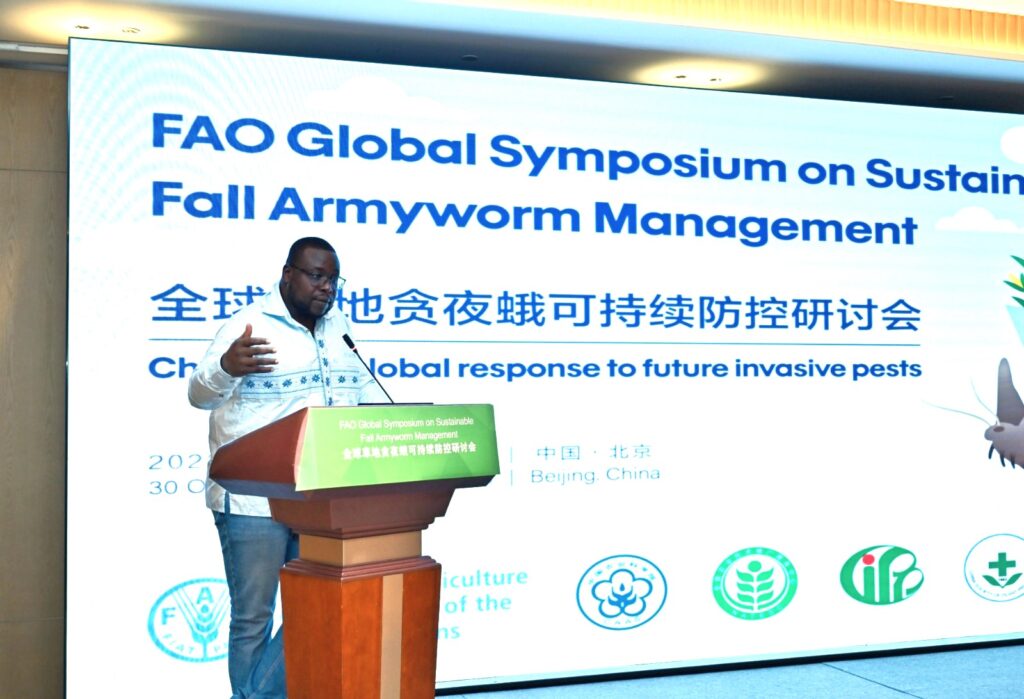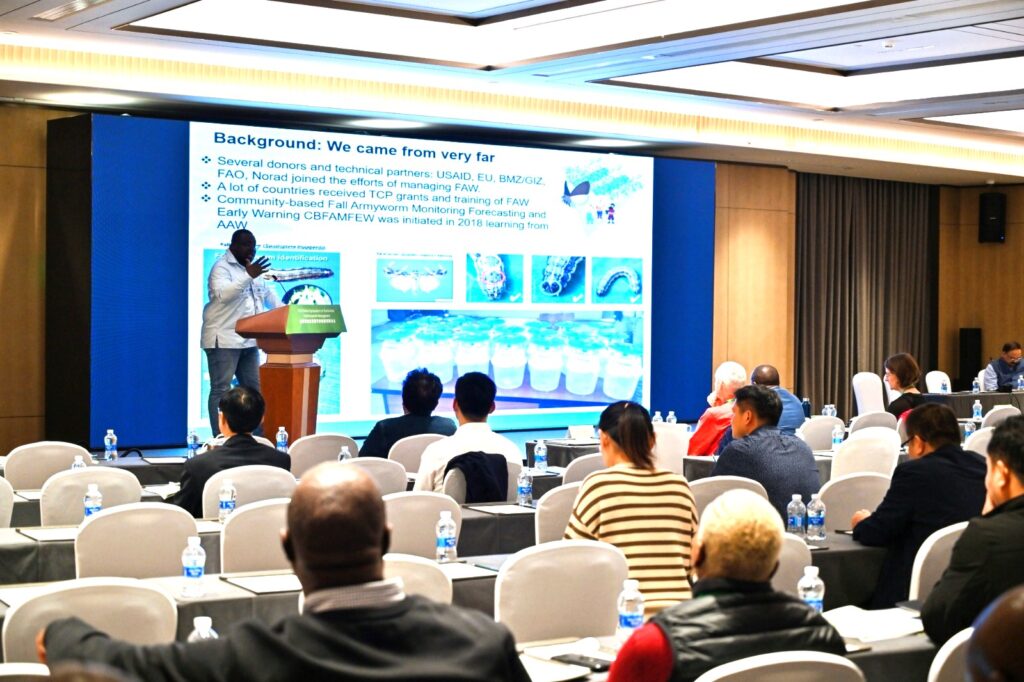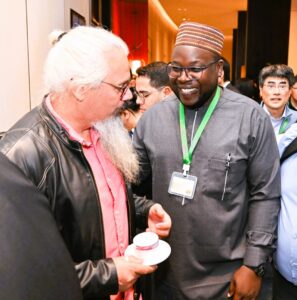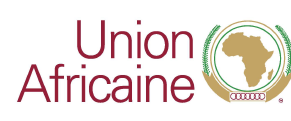African Union Inter-African Phytosanitary Council (AU-IAPSC) has called on stakeholders in the Global Action for Fall Armyworm Control (GA) and the entire plant health sector not to sleep on their laurels on Fall Armyworm management, seven years after the first reported case in Africa.
The call was made by AU-IAPSC Coordinator Dr Saliou Niassy at the recent Global Symposium on Sustainable Fall Armyworm Management organized by FAO in Beijing, China.
The Symposium brought together various stakeholders including researchers, academicians, scientists, policy makers under the theme “charting a global response to future invasive pests” as part of continued response towards the management of Fall Armyworm across the globe.
In his presentation on leveraging on regional networks to manage invasive pests, Dr Niassy noted that the fight against Fall Armyworm is not just continuous, but demands concerted efforts that embrace the changing needs of the plant health sector.

Dr Saliou Niassy addressing the audience at the FAO Global Symposium on Fall Armyworm management in Beijing, China.
He emphasized on the need to embrace research yielded technologies as one of the best tactics to combat FAW outbreaks, given the numerous global technological advancements available to management of pests and diseases.
While sharing the significant milestones registered in the management of Fall Armyworm across the African continent, he admitted the threat to food security remains high, hence the need to stay alert, leave no stone unturned and utilize the joint efforts in combating it.
Of the notable achievements and outcomes through the peak of the outbreaks is the level of coordination and collaboration that were birthed to exchange knowledge and skills, provide technical expertise, build consensus on relevant matters and ultimately implement solutions together, he said.

The audience listening attentively to Dr Saliou Niassy’s presentation at the Fall Armyworm Symposium.
He further added that leveraging networks remains crucial in the fight against FAW in critical areas such as implementation of early warning systems; coordinating, pest reporting, sharing information and record keeping among members states of the African Union through National Plant Protection organizations (NPPO’s).
Dr Niassy challenged the participants with candid self-reflectory questions on their management of FAW by their respective entities;

 “Seven years down the line since first reporting, if we knew what we now know about Fall Armyworm, would things be different? What could we have done better? Now that we all know so much about FAW, what is the way forward?.”
“Seven years down the line since first reporting, if we knew what we now know about Fall Armyworm, would things be different? What could we have done better? Now that we all know so much about FAW, what is the way forward?.”
The Symposium provided an opportunity for various key players in the agricultural and other sectors to share knowledge, sustainable management practices and draw lessons from global actions.


